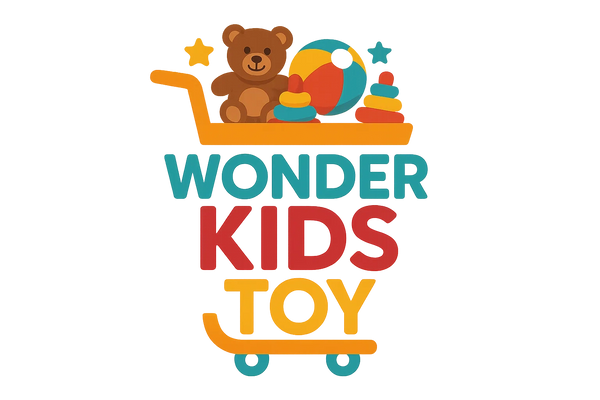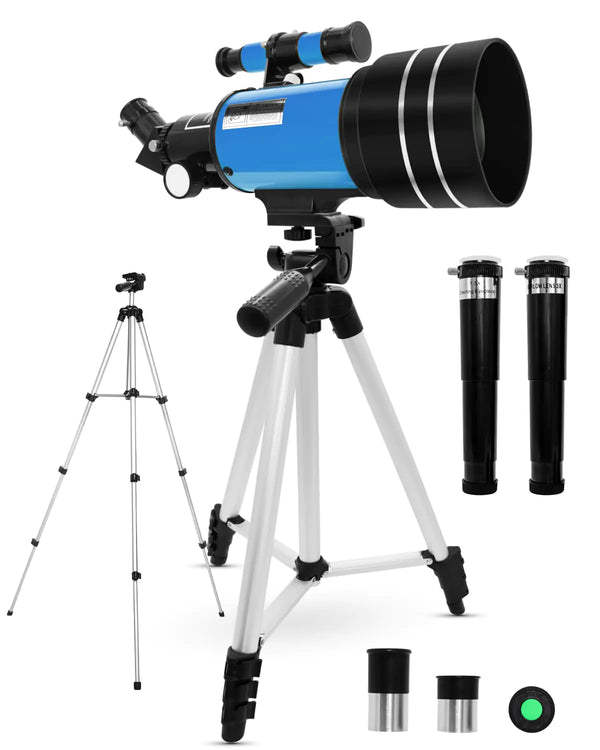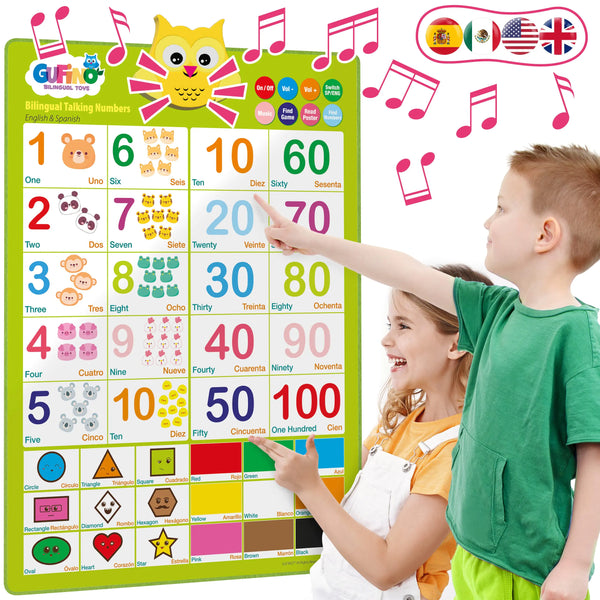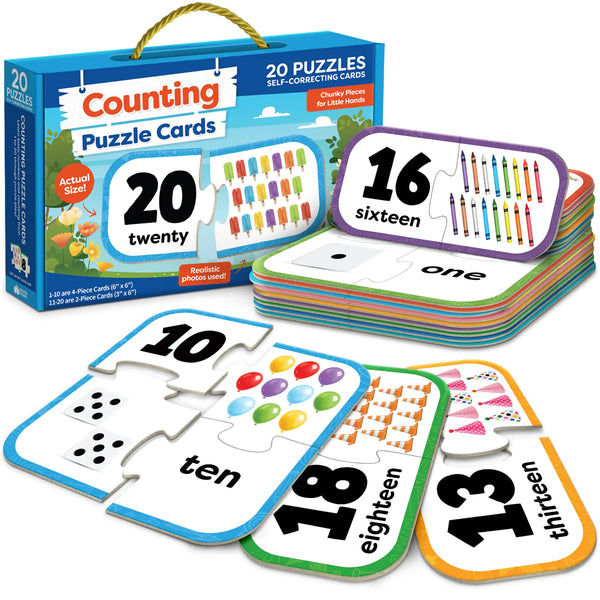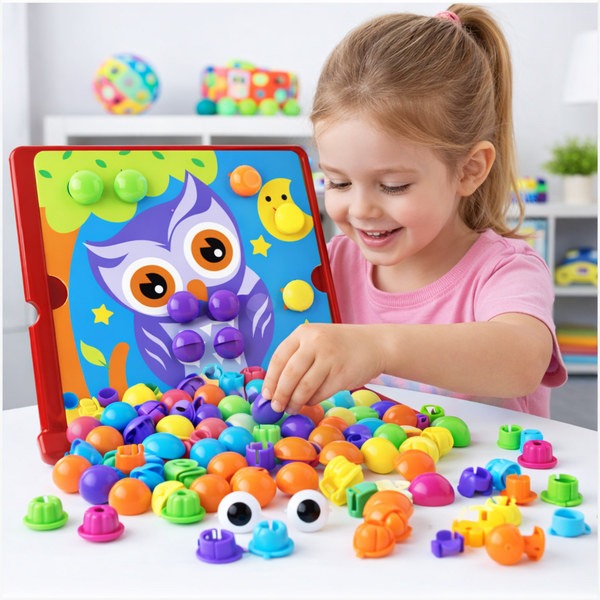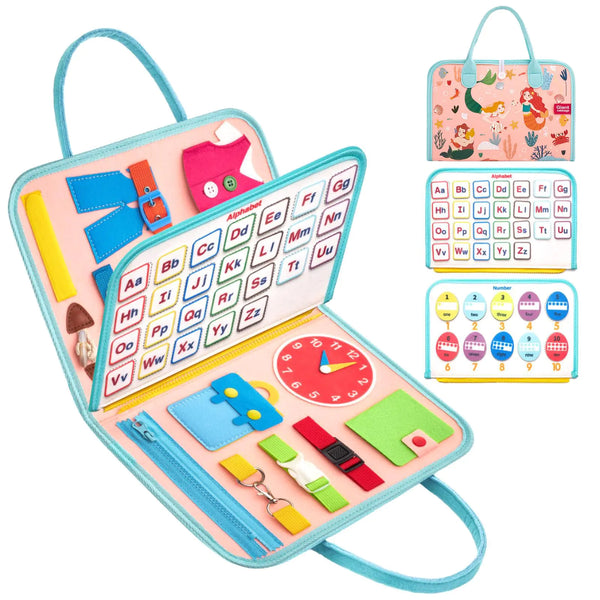The universe has always been a source of wonder and mystery, captivating the minds of young and old alike. For children, the vastness of space can spark immense curiosity and a desire to learn more about the world beyond our planet. The 'Exploring the Universe: Best Astronomy Toys for Young Explorers' article aims to introduce children to the wonders of the cosmos through engaging and educational toys. Each toy has been selected not only to entertain but also to educate, making astronomy accessible and fun for young minds.
Key Takeaways
- Astronomy toys make learning about space fun and accessible for children.
- These toys cater to various age groups, ensuring that young explorers of all ages can find something suitable.
- Many of the toys are interactive, providing hands-on learning experiences.
- The selection includes both indoor and outdoor toys, suitable for different learning environments.
- Each toy is designed to spark curiosity and inspire future astronomers.
Telescopes That Bring the Stars Closer

Choosing the Right Telescope for Kids
When choosing a telescope for kids, it's essential to find one that is both user-friendly and durable. Ease of use is key, as a complicated setup can quickly turn excitement into frustration. Look for telescopes with simple assembly instructions and sturdy construction. Additionally, consider the telescope's size and weight to ensure it's manageable for your child. A good starting point is a refractor telescope with a smaller aperture, which is easier to handle and maintain.
Top Picks for Beginner Telescopes
Here are some top picks for beginner telescopes that are perfect for young astronomers:
- Celestron 21035 70 mm Travel Scope: This portable telescope is ideal for kids on the go. It comes with a backpack for easy transportation and includes two eyepieces and a finderscope.
- Orion StarBlast 4.5 Astro Reflector Telescope: With its compact design and user-friendly features, this telescope is great for kids who want to explore the night sky. It has a 4.5-inch aperture and comes with two eyepieces for different magnification options.
- Celestron StarSense Explorer DX 102AZ: This refractor telescope benefits from the use of the brilliant StarSense app. It has a 102mm aperture and 660mm focal length, making it a worthwhile scope for beginners.
Tips for Stargazing with Kids
Stargazing with kids can be a magical experience. Here are some tips to make the most of your stargazing adventures:
- Plan Ahead: Check the weather and moon phases to ensure clear skies. Apps like StarWalk or SkyView can help you identify celestial objects.
- Dress Comfortably: Nights can get chilly, so wear layers and bring blankets or chairs for extra comfort.
- Use a Star Map: A star map can help kids learn to identify constellations and planets. You can find printable star maps online or use an app.
- Be Patient: It takes time for eyes to adjust to the dark, so give your kids a few minutes to acclimate. Please encourage them to take their time and enjoy the view.
Stargazing is not just about seeing stars; it's about sparking curiosity and wonder in young minds. With the right telescope and a bit of patience, you can open up a whole new world for your child.
Interactive Planetariums for Home

When it comes to bringing the wonders of the night sky indoors, home planetariums are a fantastic option. National Geographic Kids Planetarium is a portable device that projects stars and constellations onto walls or ceilings, complete with an audio guide that shares fascinating facts about the night sky. Another great choice is the Smithsonian Optics Room Planetarium and Dual Projector, which offers an immersive experience by projecting images of planets, moons, and stars.
Setting up a mini planetarium at home is easier. Start by choosing a dark room where you can control the lighting. Place your planetarium projector in the center of the room and ensure it has a stable stand. For the best experience, use a white or light-colored ceiling or wall to project the images. You can even add some comfy seating and blankets to make it a cozy spot for stargazing.
Home planetariums offer numerous educational benefits for kids. They provide a hands-on learning experience that can spark an interest in astronomy and science. Kids can learn about different constellations, planets, and celestial events in a fun and engaging way. Additionally, using a planetarium can be a great bonding activity for families, making learning a shared experience.
Solar System Models and Kits

Exploring the universe can start right at home with some fantastic solar system models and kits. These toys are perfect for sparking curiosity and encouraging hands-on learning. Building your own solar system is not only fun but also educational, helping kids understand the positions and features of different planets.
Building Your Own Solar System
Why settle for a simple mobile when you can create an entire solar system that glows in the dark? This kit is perfect for kids aged 8 and up, offering not just a fun craft activity but also a fantastic educational experience. Kids will love painting and assembling the planets, learning about their positions and features as they go. The kit includes everything needed: planets, a sun, glow paints, and complete instructions. It's a hands-on way to explore astronomy and spark a love for science.
Educational Benefits of Solar System Kits
Solar system kits are a great way to introduce kids to the wonders of space. They help in understanding the physics fundamentals through play. These kits often include educational booklets that offer interesting facts about each planet, making learning fun and interactive. Plus, the hands-on nature of these kits helps in developing fine motor skills and spatial awareness.
Top-Rated Solar System Models
Here are some top-rated solar system models that you might want to consider:
- KIDZ LABS Solar System Planetarium: This build-your-own model is 30cm wide and glow-in-the-dark, perfect for kids who love those glowing star stickers on their wall.
- LEGO Classic - Creative Space Planets: A bit pricier but offers a creative twist to building a solar system.
- Surprise Ride - Build a Model Moon Activity Kit: Highly rated by customers, this kit focuses on building a model moon and is an excellent introduction to space exploration.
Encouraging curiosity and learning through hands-on experiences is one of the best ways to get kids interested in science and astronomy. These solar system models and kits are perfect for young explorers eager to learn more about the universe.
Space-Themed Board Games

Board games are a fantastic way for kids to have fun while learning about astronomy and space exploration. They provide an interactive experience that engages children in strategic thinking and problem-solving. Here are three space-themed board games that are both fun and educational:
- Space Alert: In this cooperative board game, you and your friends will play as the crew of a spaceship. Together, you’ll get creative to troubleshoot and defend the ship from attacks. Best suited for one to five players.
- Spaceteam: This card game is accurately billed as “chaotic and cooperative.” You and your friends will work together to keep a spaceship functioning as curveballs are thrown your way.
- Pillars of Creation Puzzle: This tricky board puzzle has 60 different challenges, ranging from Easy to Expert. Choose a challenge and set up the board with the spaceship and asteroids as shown in the booklet. Then slide the 3D pieces to help your spaceship escape through the asteroid field, without overlapping.
Playing space-themed board games is not just about fun; it's also a great way to learn. These games encourage kids to think critically and solve problems, all while sparking an interest in astronomy. Board games can be a subtle yet effective educational tool that makes learning feel like play.
One of the best things about space-themed board games is that they are perfect for family game nights. They offer a unique opportunity for families to bond over a shared interest in space. Plus, they are suitable for a wide range of ages, making them an excellent choice for family-friendly entertainment.
Playing these games together can create lasting memories and inspire a lifelong love of space and science.
Astronomy Books for Young Minds

There's a fantastic collection of space-themed books that cover everything from the basics of astronomy to the latest discoveries in space exploration. These books will ignite a lifelong love for science and satisfy the curiosity of young minds.
One of my favorite interactive books is “The Ultimate Book of Space” by Anne-Sophie Baumann. This book is packed with information about space exploration, from the history of astronomy to the latest discoveries. It includes lift-the-flap features, pop-up illustrations, and interactive elements that engage kids in learning.
As parents, it's our responsibility to nurture children’s curiosity and encourage them to explore the wonders of the universe. By introducing them to the fascinating world of astronomy through books, we can inspire the next generation of astronomers, scientists, and explorers who will continue to push the boundaries of human knowledge and understanding.
Books are a gateway to the stars, sparking curiosity and a love for learning in young minds.
DIY Astronomy Projects

Getting kids involved in simple space crafts is a fantastic way to spark their interest in astronomy. One of my favorite projects is creating a cardboard telescope. This kit includes all the lenses, mirrors, and parts needed to build a functional telescope. It's a hands-on way to teach young astronomers how telescopes work. Plus, it's a fun activity that you can do together!
Building a homemade telescope can be a rewarding project for both you and your child. You can find kits that provide all the necessary components, including lenses and mirrors. Assembling the telescope helps kids understand the mechanics behind these fascinating instruments. Once built, you can use it to observe the night sky, making the learning experience even more exciting.
Creating constellation art is another engaging project. You can use glow-in-the-dark stickers or paint to map out constellations on a piece of black construction paper. This activity not only teaches kids about different constellations but also adds a decorative touch to their room. It's a creative way to combine art and science.
DIY astronomy projects are not just educational; they also provide a unique bonding experience for families. These activities encourage curiosity and a love for learning, making them perfect for young explorers.
Educational Space Apps and Games

Best Astronomy Apps for Kids
In today’s digital age, there are countless apps available that can help kids learn about space and astronomy. These apps provide interactive experiences that engage children in learning and exploration. Here are some of the top astronomy apps for kids:
- Star Walk Kids: This app lets kids explore the night sky and learn about various celestial objects. It features interactive animations, informative videos, and fun facts about stars, planets, and constellations.
- NASA App: Provides access to a wealth of information on space exploration. It includes live streaming of NASA TV, images from space missions, educational videos, and news updates about the latest discoveries.
- SkyView: This app uses augmented reality technology to overlay information about stars, planets, and constellations onto the real sky. Kids can point their device at the sky to identify different celestial objects and learn interesting facts about them.
Interactive Learning Through Apps
Interactive apps are a fantastic way to make learning about space fun and engaging for kids. These apps often include games, quizzes, and interactive simulations that help children understand complex concepts in a simple, enjoyable way. Bold: They can explore the universe from the comfort of their home, making learning both accessible and exciting.
Screen Time with a Purpose
While screen time is often a concern for parents, educational apps can turn it into a productive activity. By using apps that focus on astronomy and space exploration, kids can spend their screen time learning and discovering new things. This not only keeps them entertained but also fosters a love for science and exploration. It’s a win-win situation for both kids and parents!
Astronaut Dress-Up and Role Play

One of the most exciting ways to spark a child's interest in space is through dress-up. Astronaut costumes are not only fun but also educational. They allow kids to immerse themselves in the role of an astronaut, fostering both creativity and a love for space exploration. From helmets to full suits, there are plenty of options available to suit every young explorer's needs.
Role-playing space missions can be an incredible way for kids to learn about the challenges and excitement of space travel. By acting out different scenarios, children can develop problem-solving and teamwork skills. Whether it's a mission to Mars or a moon landing, the possibilities are endless and can be tailored to fit the interests of your child.
Imaginative play is crucial for a child's development. It helps build cognitive and social skills and encourages creativity. When kids engage in astronaut role-play, they are not just having fun; they are also learning valuable lessons about science, technology, and the universe. Plus, it's an excellent way for parents to bond with their children while exploring the wonders of space together.
Let your child's imagination soar as they embark on their own space adventures. With the right costume and a bit of creativity, the sky is not the limit—it's just the beginning.
Glow-in-the-Dark Stars and Planets

Decorating with Glow-in-the-Dark Stickers
Transforming your child's room into a mini galaxy is easier than you think! With glow-in-the-dark stickers, you can create a magical night sky right on their bedroom ceiling. These stickers are not only fun but also educational, helping kids learn about constellations and the solar system. Best of all, they can fall asleep under a starry night without leaving the comfort of their bed.
Creating a Starry Night in the Bedroom
Why settle for a simple mobile when you can create an entire solar system that glows in the dark? This kit is perfect for kids aged 8 and up, offering not just a fun craft activity but also a fantastic educational experience. Kids will love painting and assembling the planets, learning about their positions and features as they go. The kit includes everything needed: planets, a sun, glow paints, and complete instructions. It's a hands-on way to explore astronomy and spark a love for science.
Educational Uses of Glow-in-the-Dark Toys
Glow-in-the-dark toys are more than just cool decor items; they are fantastic educational tools. They enhance knowledge of the solar system, encourage creativity, and develop fine motor skills. Plus, the fun factor is high—painting that glows in the dark adds an exciting twist to the learning process. These toys make astronomy accessible and fun for kids, sparking their curiosity and making them eager to learn more about the universe.
Space-Themed Puzzles and Brain Teasers

Puzzles are a fantastic way for kids to develop problem-solving and critical thinking skills. They require children to think logically, analyze patterns, and use trial-and-error to find solutions. Here are some space-themed puzzles that are perfect for kids:
Top Space Puzzles for Kids
One of my favorite space-themed puzzles is the EuroGraphics Space Exploration Puzzle. This 300-piece puzzle showcases different aspects of space exploration, including astronauts, rockets, and satellites. It offers a more challenging experience for older kids and promotes problem-solving and critical thinking skills.
Benefits of Puzzle Play
Puzzles are an excellent way for kids to develop problem-solving and critical thinking skills. They require children to think logically, analyze patterns, and use trial-and-error to find solutions. Additionally, puzzles can help improve hand-eye coordination and fine motor skills.
Challenging Brain Teasers
For those looking for a real challenge, the Space-Themed Single Player Logic Puzzle Game is a must-try. This tricky board puzzle has 60 different challenges, ranging from Easy to Expert. Choose a challenge and set up the board with the spaceship and asteroids as shown in the booklet. Then slide the 3D pieces to help your spaceship escape through the asteroid field, without overlapping. It's suitable for kids aged eight and up and is a great travel game.
Rocket Building Kits

Top Rocket Kits for Kids
One of the most popular items is the DIY rocket kit, which lets kids (and kids at heart) build and launch their own model rockets. This kit is not only a blast (pun intended) but also teaches valuable lessons in physics, aerodynamics, and engineering. Here are some top picks:
- Estes Alpha III Rocket Launch Set: Perfect for beginners, this kit includes a rocket, launch pad, and launch controller, making it easy for kids to build and launch their own spacecraft.
- LEGO Ideas NASA Apollo Saturn V: This LEGO set allows kids to build a detailed model of the iconic Apollo Saturn V rocket. It includes over 1,900 pieces and stands over three feet tall when assembled.
- Surprise Ride - Build a Model Moon Activity Kit: A fun and educational kit that lets kids build a model of the moon.
- NASA Space Shuttle Construction Kit: This challenging build features over 450 pieces and creates an attractive display model of the iconic Space Shuttle.
Learning Physics Through Rocketry
Building and launching a rocket is an exciting and educational activity that can teach kids about engineering and physics. It allows them to apply their knowledge of science and technology in a hands-on way. Understanding the principles of aerodynamics and propulsion can spark a lifelong interest in STEM fields.
Safe Rocket Launching Tips
Safety is paramount when launching rockets. Here are some tips to ensure a safe and enjoyable experience:
- Always follow the instructions provided with the rocket kit.
- Launch missiles in an open area, away from buildings and trees.
- Use a launch pad and a controller to ensure a stable, controlled launch.
- Supervise children at all times during the building and launching process.
Rocket building kits are a fantastic way to combine fun and education, providing kids with a memorable experience that also fosters a love for science and engineering.
Discover the excitement of rocket building with our premium kits! Perfect for young engineers and space enthusiasts, our kits provide hands-on learning and endless fun. Ready to launch your creativity? Visit our website now and explore our full range of rocket building kits!
Conclusion
Exploring the universe has never been more fun and accessible for young minds. With the right astronomy toys, kids can embark on a journey through the cosmos right from their backyard or bedroom. From telescopes that bring distant stars into focus to interactive games that teach about the solar system, these toys are perfect for sparking curiosity and fostering a love for science. So, keep encouraging your young explorers to look up and wonder—who knows, you might just be nurturing the next great astronomer!
Frequently Asked Questions
At what age is it appropriate for kids to start using a telescope?
Children as young as 5 years old can start using simple telescopes with adult supervision; for more advanced telescopes, ages eight and up are generally recommended.
Are there any safety concerns with using astronomy toys?
Most astronomy toys are designed with safety in mind. However, adult supervision is recommended, especially with items like telescopes and rocket kits, to ensure proper handling.
How can I encourage my child to take an interest in astronomy?
Start with simple and fun activities like stargazing, reading space-themed books, or using interactive apps. Gradually introduce more complex toys and projects as their interest grows.
What are some good beginner telescopes for kids?
Some top picks for beginner telescopes include the Celestron AstroMaster 70AZ, Orion StarBlast 4.5 Astro Reflector, and the Meade Infinity 70mm Refractor Telescope.
Can home planetariums really simulate the night sky?
Yes, many home planetariums use advanced projection technology to simulate the night sky, displaying stars, planets, and even constellations, making them a great educational tool.
What educational benefits do solar system models offer?
Solar system models help kids understand the relative positions and movements of planets, enhancing their spatial awareness and knowledge of astronomy.
Are there any good astronomy apps for kids?
Yes, some popular astronomy apps for kids include Star Walk Kids, SkyView, and NASA's Eyes. These apps offer interactive, educational experiences about space.
How can I make stargazing more enjoyable for my child?
Choose a clear night, find a dark location away from city lights, and use a star map or app to identify celestial objects. Bringing along a telescope or binoculars can also enhance the experience.

